Don’t wait too long for an oil change!
We have some special offers for our readers for oil changes at Valvoline!
Click each offer below to redeem
Oil is very important for the proper and safe functionality of an engine.
It provides the necessary lubrication for the moving engine components to prevent grinding and engine damage.
Regular oil changes improve the overall engine lifespan.
Oil changes are typically recommended at around 3,000 – 5,000 miles or 6 months, whichever comes first. At no point should engine oil be replaced further than 1 year apart. The best way to determine your appropriate oil life is by checking your owner’s manual or waiting for an oil life indicator.
There are a number of factors that determine the length of your oil engine life.
If you go over the recommended oil life that is generally ok, but should be avoided. You shouldn’t exceed 2,000 miles over the recommended limit before you seriously have engine damage.
This article will tell you everything you need to know about when it is recommended to get oil changes and when you NEED to get an oil change.
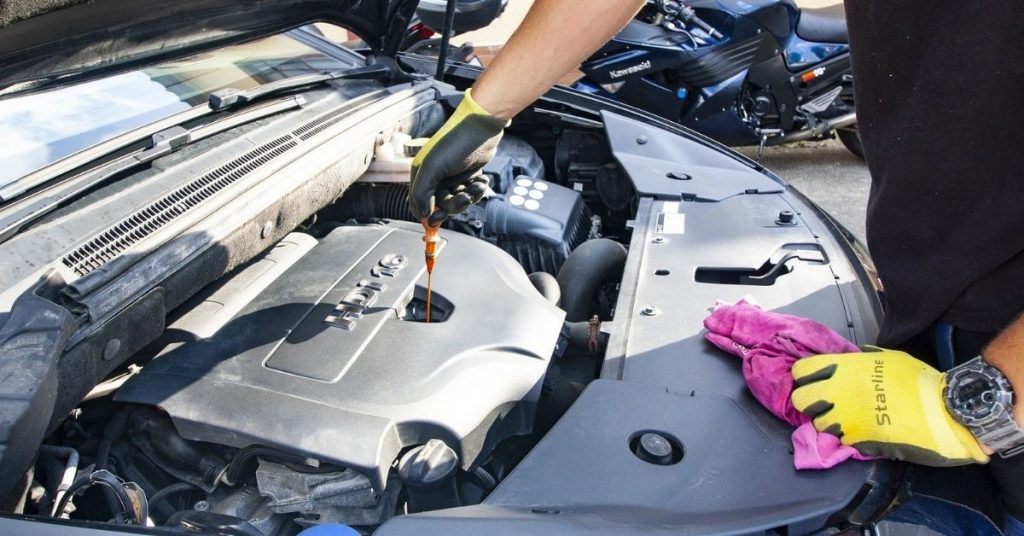
What is an oil change?
An oil change is the process of replacing the oil that is currently in your engine with new oil. This also involves replacing the oil filter.
The oil filter is what keeps the oil free from debris, so as that plugs, it becomes less efficient and needs to be replaced.
It involves first draining the oil from the engine, replacing the filter, and then refilling the engine with new oil, but will be discussed in more detail later in the post if you’re interested.
Why you need an oil change?
Oil changes are very important to the proper functioning and longevity of an engine.
The purpose of oil in an engine is to create a lubricant for the engine. There are a lot of moving parts in an engine including pistons, valves, and shafts. As these parts produce power from the engine they are moving hard and fast and need some type of lubrication to prevent metal on metal grinding.
Oil also is also responsible for absorbing heat and keeping engine temperatures down.
Over time as the engine oil gets used, it starts to become thick and does not function as it should. So the oil needs to be changed for a number of reasons.
These reasons are:
1. Replace engine lubricant
2. Improve engine efficiency
3. Extend engine lifespan
4. Flush engine of dirt and grime
5. Prevent friction and overheating
Alright, so now that you know why you need an oil change, lets look into when you should perform an oil change.
How often do you need to change your oil?
Unfortunately, there is no exact number or one size fits all answer to this question.
Oil life is usually listed in terms of mileage limits and also lists a month limit. These guidelines mean that oil should be changed at the mark of whatever comes first.
However, the general recommendations for an oil change are typically between 3,000 – 5,000 miles or 6 months to a year max.
It is better for your engine to err on the side of caution and change your oil on the earlier side. If you don’t know the exact recommendations, 3,000 miles and 6 months is a safe bet to minimize the risk of damaging your engine due to the oil.
These guidelines are changing a little bit due to improved research and engine modifications.
The best way to determine how often you need an oil change is to look in your owner’s manual.
There are a number of factors that come into play to influence the frequency of an oil change.
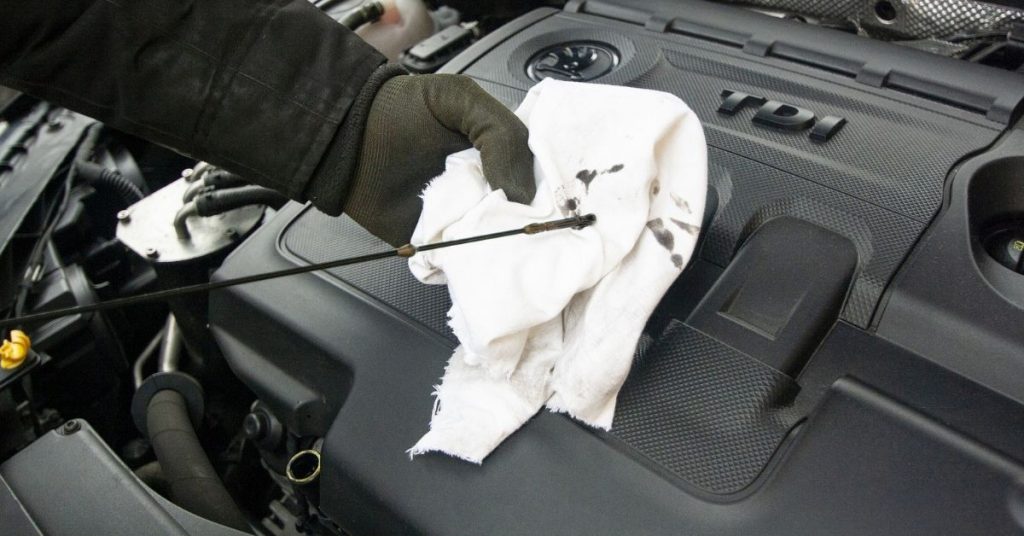
Factors that impact oil change frequency
Car age
Older cars typically need to have oil replaced more frequently than newer cars because they have had more miles and use. The repetitive engine use means that there is more metal steering within the engine which means that the oil gets dirtier faster.
Driving Conditions
Weather conditions can affect the longevity of oil such as extreme heat and cold.
Using a vehicle for heavy loads and towing also decreases the oil life.
Oil Type
There are two main oil types: synthetic blend and synthetic. I recently had an oil change and the auto shop estimated that a full synthetic change should add about an extra 2,000 miles to your oil life.
The way this oil type is fabricated prevents it from sludging sooner.

Engine type
All engines have similar components, but there are some variations in how they are designed. By nature, some engines require more oil and need to lubricate more surfaces causing the oil life to decrease.
Hybrid engines, however, always have longer oil life than gas engines.
2021 Ford F150 Example
As mentioned before the exact recommendations for your oil change will be provided in your owner’s manual.
Here I will go through an example of the different recommendations based on various uses in the 2021 Ford F150.
Because the Ford F150 is used typically as a utility truck, the general guidelines for an oil change are 5,000 miles or 6 months, whichever comes first.
As many cars nowadays have, the F150 has a built-in oil life monitor in the electronics of the car.
This message will pop up whenever the computer determines the necessary time for an oil change.
The table below shows the approximate mileage that the oil change message will pop up and states that you should not exceed 3,000 miles after this message pops up.
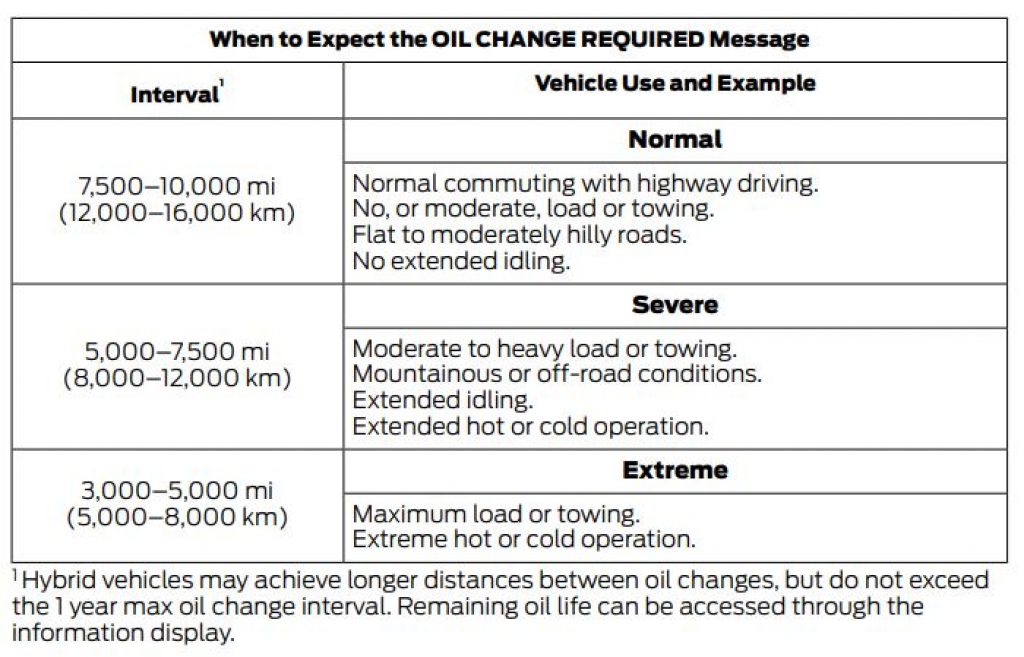
What you will notice in the chart above is that for normal driving, the engine may not need an oil change until up to 10,000 miles. But on the low end, it may need a change as little as 3,000 miles.
Since the 2021 F150 is a relatively new engine, it requires less frequent changes than a 2000 F150 may need.
The hybrid version of the F150 may even have up to 15,000 miles per oil change.
Remember, however that mileage is not the only factor to determine oil changes. After a certain amount of time, oil must be changed in a vehicle regardless of whether the car has been driven or not.
Ford states that a vehicle should never exceed 1 year without an oil change.
You may also like: Oil Type and Capacities for Ford F150
Should I follow my oil life indicator?
Yes, most modern oil life indicators can be followed. Manufacturers put lots of time and energy into making these indicators as accurate as possible.
Old oil life indicators simply worked by notifying a user when a certain mileage distance was reached.
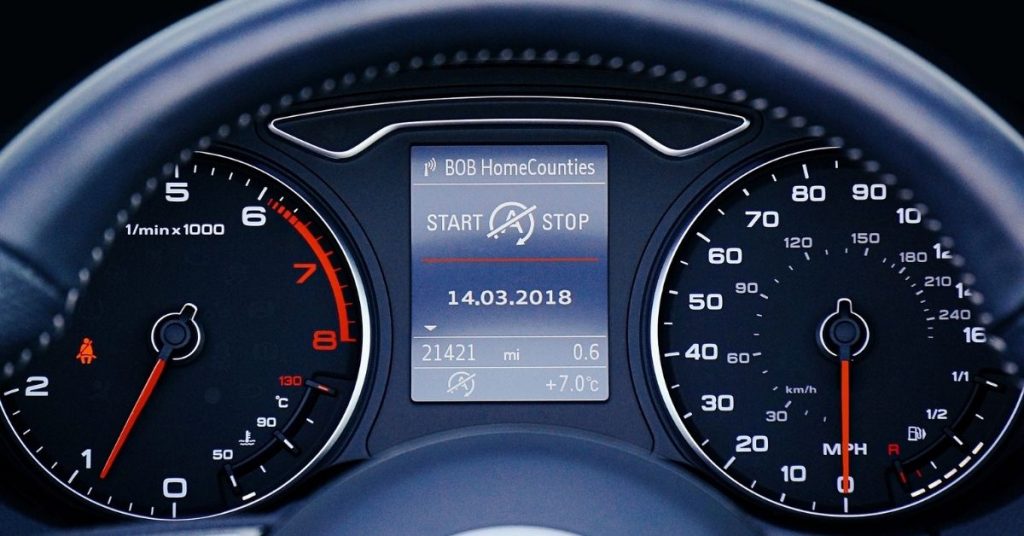
For example, if the manufacturer recommended 3,000 miles before an oil change, the computer will set a notification for when 3,000 miles is reached from the last oil change.
Nowadays, however, oil life indicators have gotten much more advanced. They have the ability to measure conductivity, mechanical properties, soot concentration, and water presence (How Stuff Works).
So the oil life indicator may use a combination of these metrics to determine when the oil needs to be changed. The addition of these softwares makes it better for you as the driver because it typically allows for you to conduct fewer oil changes and save money in the long run.
What happens if I wait too long for an oil change?
Ultimately waiting too long for an oil change could damage your engine.
Without lubrication in an engine, the internal parts will grind and could break.
So at what point do you know it’s time for an oil change?
How to tell if you need an oil change?
If you don’t know whether or not you need an oil change, it cannot hurt your car if you decide to change your oil earlier than is needed.
However, if you ever see any of the following symptoms in your car, you should get your oil changed immediately.
You smell something burning
The first is a burning smell. I have experienced the smell of burning oil when there is any type of leak, so that should be checked first, however, if no leak is observed, your engine parts could be grinding causing a burning smell.
Your oil is dark
New engine oil should have a more transparent color. As you should regularly check your engine level, you should also check the color of the liquid. If you notice the color to be quite dark and the dipstick is not well visible, it may be time for a change. This discoloration means that the oil has lost some of its lubricating properties.
Your engine is knocking
Engine knocking is extremely scary because it sounds very dangerous. It can be caused by an incorrect balance of fuel and air in the cylinders, but it could also be due to engine parts getting stuck. Without the lubrication, the grinding could cause cylinders and pistons to stick. And when the components that are stuck slip, the excess force can cause an audible sound.
Your check engine light is on
Check engine lights are due to many possibilities. One could be an oil change.
To eliminate other reasons for the check engine light is to get a code reader. This is a simple plug-and-play reader that connects to your car to tell you the issue needing fixing.
I have the Ancel Universal Scanner and it has everything I need and more saving me a ton of time and money needing to go to a shop to get my problem diagnosed.
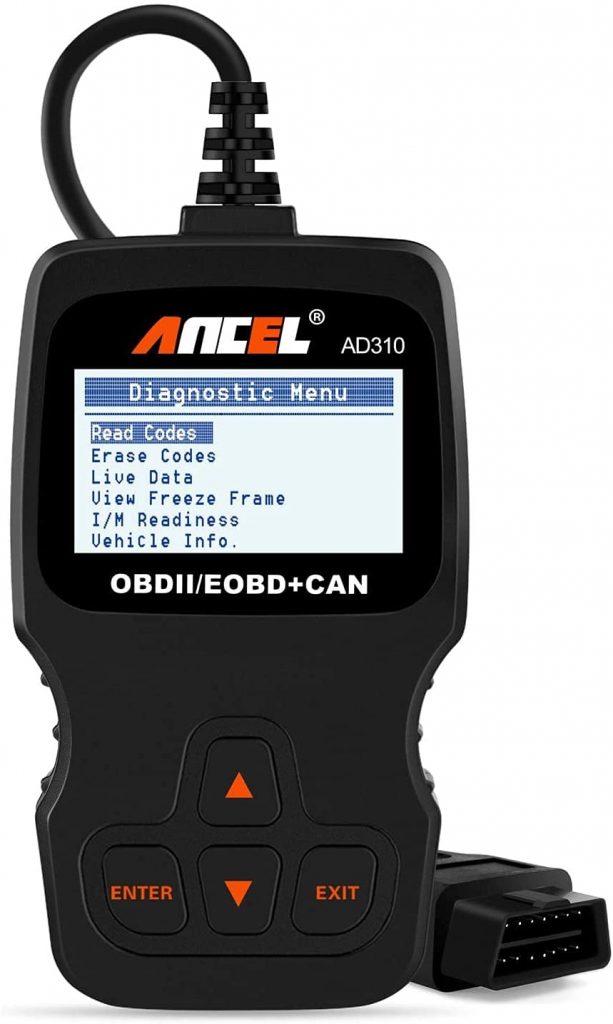
Ancel universal scanner
Amazon Affiliate Link
Code reader
Next steps: How to get an oil change?
So you now know that you require an oil change. But how do you do that?
The easiest way is to go to a shop to get this done. Many auto shops will be able to do this for you. They of course will charge a bit more than if you were to do it yourself.
Some common options are:
- Valvoline – view coupons here
- jiffylube – view coupons here
- Firestone – view coupons here
How to do your own oil change
I have performed almost all of my own oil changes. It is much easier than you think.
Some cars, however, are more difficult than others due to the location of the oil drains and oil filters.
The general process of changing your own oil is to:
- Open and remove oil fill cap
- Place an oil drain pan below the oil drain
- Remove oil drain plug
- Let oil drain to a drip
- Replace drain plug
- Remove oil filter
- Refill engine oil
- Start engine and check for leaks
This process is incredibly easy to follow with the video below from O’Reilly Auto Parts.
Items you will need to perform your own oil change:
- Motor Oil (check your owner’s manual or oil cap for engine oil type)
- Oil Filter (also listed in owner’s manual)
- Oil Filter Wrench (though this isn’t needed all of the time, it can be very difficult to remove some filters, so I highly recommend adding this to your toolbox)
- Oil Drain Pan
- Funnel





